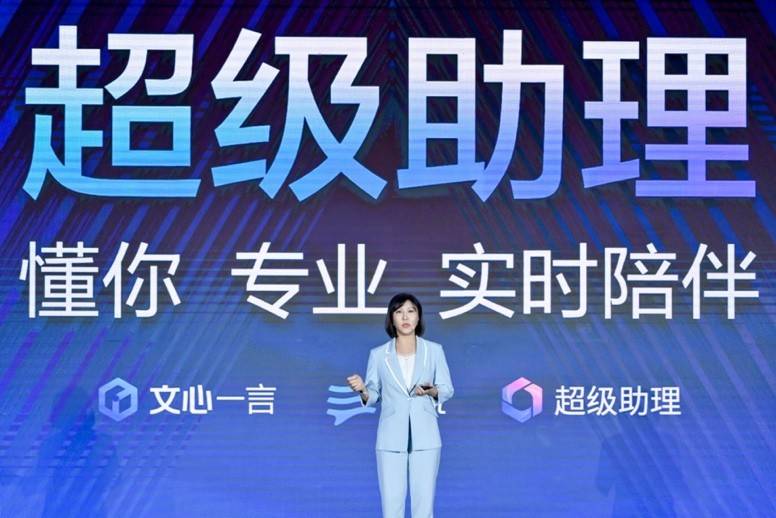
It’s understandable why GenAI is so attractive to modern enterprises. It is a game-changing technology that can serve countless purposes in different industries around the world. It can drive change across business functions, with positive impacts ranging from improving customer experience to streamlining daily business tasks.
Executives expect to use GenAI to support creativity, according to new data from Bain and UiPath Related activities include process (44%), data synthesis and enhancement (46%), automation (32%) and driving innovation (30%). However, while GenAI promises significant operational efficiencies, much of the work of integrating GenAI into a company’s technology stack will need to be undertaken by the CIO.
CIOs realize the value GenAI can provide, but they Deployment should not be rushed because of pressure from CEOs and Boards of Directors
GenAI requires ongoing maintenance and training to keep the technology performing at its best, extensive security protocols to protect data, and extensive work to ensure it can be trusted. Additionally, when deploying GenAI in an enterprise - especially where access to proprietary or sensitive data is allowed - data protection regulations and privacy become critical issues.
CIOs must be constantly on the defensive, spending time running security protocols and ensuring proper compliance. Here's why, despite enthusiasm, few companies have reached the point of developing robust GenAI deployments As the demand for artificial intelligence continues to rise, chief information officers (CIOs) must take a methodical and comprehensive approach to apply artificial intelligence to overcome the challenges they face – before investing, consider their needs and what business problems this technology can solve
Why GenAI is keeping CIOs up at night
Enterprise security is one of the hurdles many CIOs face when evaluating GenAI solutions. Bringing GenAI into the company means potential risks to privacy, cybersecurity, regulatory compliance, third-party relationships and legal obligations.
CIOs should emphasize responsible AI and maintain security and compliance every step of the way—ensuring that the value proposition to employees, executives, and boards is trust by design, not just speed. Earning trust and delivering secure, scalable deployments requires demonstrating that the business is balancing the risks and rewards of innovation.
CIOs need to consider trustworthiness and ethics in addition to security when considering. According to research, 73% of IT leaders are concerned about biased results in AI solutions. The growing number of stories of tools providing false or biased information (also known as hallucinations) is creating more headaches for CIOs. For businesses, this could mean employees are Unknowingly using inaccurate output from GenAI tools to inform customer conversations, or citing biased recommendations that can damage their relationships and reputation, which is why large language models must be regularly monitored and data sourced from within the enterprise Fine-tune it to ensure optimal performance.
This technology cannot operate statically but requires ongoing oversight to ensure accuracy and eliminate bias. People must always be in the loop to ensure that AI models are trustworthy and secure across the enterprise
As with other emerging technologies, many employees are not yet trained to use GenAI. According to a recent study, 62% of employees say they don’t have the skills to use this technology effectively and safely. In many cases, employees are intimidated by AI and refuse to use it, further hindering the effective and safe implementation of the technology. In addition to concerns about how AI will be used in the enterprise, CIOs also lack confidence in their employees' ability to effectively utilize the technology, which is a real factor to consider. Until these challenges are addressed, CIOs It will be difficult to build a strong business case that transcends the superficial appeal of GenAI's broad capabilities.
Overcoming Obstacles
Despite these realities, CIOs still face pressure to accelerate GenAI investment and implementation. If they are to meet these needs over the next year while creating scalable solutions, I recommend they focus on three fundamental areas.
1. Identify areas in the business that are ripe for transformationBy providing specific examples of how GenAI can improve processes rather than presenting it to the company as a generic tool, CIOs They can confidently measure the impact of their investments when reporting to the board and CEO.
2. Prioritize employee advocacy and training
Despite lacking the skills to leverage AI, many employees are eager to take advantage of the technology. Providing specialized training services to ensure the effective and safe use of land management systems will facilitate faster deployment and results. Cross-functional training will also ensure trust, security and maintaining technology are priorities across the business.
Focus on enterprise capability assessment solutions
While GenAI can bring employee productivity benefits, the technology itself cannot proactively act to realize these benefits. Typically, automation can help implement various ideas for AI technology, and finding solutions that combine AI and automation can help CIOs scale their GenAI deployments
In the process, companies face a A common challenge is the lack of a strong AI automation deployment plan. At the same time, supporting employees can also become a challenge during automation deployment. To address these issues, here are my recommendations
- Employ executive sponsorship and business-led process improvements. Communicate the value proposition, ensure the automation efforts are technically sound, and ensure the automation journey aligns with the business's unique operating structure and goals.
- Create a strong value framework to identify key value drivers (revenue growth, new product or service offerings, data monetization pathways, etc.).
- Examine where in automated processes are people adding value when they are not needed, and how to better allocate employee time to more critical business tasks.
Ultimately, rushing to deploy GenAI won’t help any company—especially if they don’t prioritize trust, safety, and employee training. Chief Information Officers (CIOs) are the first line of defense in ensuring that their companies do not fall victim to strategy mistakes, however, with the right strategy in place, CIOs and IT leaders can confidently invest in the strategies their business leaders are eager to adopt. tools while creating significant value for their business
The above is the detailed content of GenAI: Challenges CIOs have to face and how to effectively respond. For more information, please follow other related articles on the PHP Chinese website!
 简单了解如何用 GenAI 提高编码效率Jan 29, 2024 am 11:33 AM
简单了解如何用 GenAI 提高编码效率Jan 29, 2024 am 11:33 AMHellofolks,我是Luga,今天我们来聊一下人工智能(AI)生态领域相关的技术-GenAI。面对快速变化的技术创新和多样化的业务场景挑战,传统编码方式逐渐显现出适应不足的问题,无法满足不断增长的需求。而新兴的通用GenAI(人工智能技术)则具备巨大潜力来满足这一需求。GenAI是一种前沿技术,结合了人工智能和编码领域的知识,为开发者们提供了独特的“协作”优势。利用GenAI,开发人员可以获得高效的编码支持和创意灵感,以更快、更智能地解决复杂的编程问题。GenAI的智能算法和人工智能技术可
 九种方法避免成为AI washing的牺牲品Jun 03, 2023 pm 07:33 PM
九种方法避免成为AI washing的牺牲品Jun 03, 2023 pm 07:33 PM这几个月来,人工智能一直是为大家津津乐道的流行语。硅谷的初创公司和财富500强公司都看到,随着人工智能步伐的稳步加快,各行业都发生了革命性变化。但是,兴奋、进步与AIwashing(夸大人工智能作用的现象)这样的危险信号,正在以同样的速度蓬勃发展。尽管事实上,一些企业采用的人工智能微乎其微或根本不存在,但是,由于他们急切地想搭上赚钱的列车,想从炒作中获利,所以他们夸大了自己的人工智能能力。与非人工智能初创企业相比,这种营销策略尽管有问题,但可以帮助他们获得更大的种子轮、A轮和B轮融资。根据Glo
 GenAI是否将摧毁UiPath的成功故事?Apr 09, 2024 pm 02:31 PM
GenAI是否将摧毁UiPath的成功故事?Apr 09, 2024 pm 02:31 PM最初,公司转向更便利的劳动力以提高效率——比如孟买的John和马尼拉的Rosie,然后,他们意识到孟买后台操作所采用的依据流程的方法非常适合自动化,机器人流程自动化(RPA)应运而生,现在数字代理正蚕食着后台办公室,而聊天机器人也在观看马尼拉的Rosie的工作,结果,一切都变得更好、更快、更便利,接着,GenAI出现了。UiPath、RPA和GenAI我们不仅因为赞助商付费而对他们赞不绝口,这些人不仅长得好看,而且还提出了一些很棒的问题,例如,许多人问GenAI是否为解决方案过时了,这些问题背后
 一文搞懂如何基于 GenAI 提升编码效能Apr 01, 2024 pm 06:49 PM
一文搞懂如何基于 GenAI 提升编码效能Apr 01, 2024 pm 06:49 PMHellofolks,我是Luga,今天我们来聊一下人工智能(AI)生态领域相关的技术-GenAI。面对日新月异的技术创新以及差异化的业务场景挑战,传统的编码方式已经开始出现水土不服,难以完全应对日益增长的诉求。与此同时,新兴的通用GenAI(人工智能技术)具有极具潜力的能力来满足这一需求。GenAI作为人工智能技术的代表,以其强大的潜力和能力已经开始在各行各业得到广泛应用。它可以自动学习和适应不同场景下的编码需求,极大地提高了编码效率和质量。通过深度学习和模型优化,GenAI能够准确地理解不同
 百度CIO李莹:大模型是企业办公领域的重要机遇,AI的原生重构将改变智能工作方式Aug 18, 2023 pm 11:49 PM
百度CIO李莹:大模型是企业办公领域的重要机遇,AI的原生重构将改变智能工作方式Aug 18, 2023 pm 11:49 PM2023年8月16日,WAVESUMMIT深度学习开发者大会在中国举办,该活动由深度学习技术及应用国家工程研究中心主办,百度飞桨和文心大模型承办。在会上,百度发布了文心大模型、飞桨平台和AI原生应用如流等一系列技术、产品的最新进展和生态成果。百度集团副总裁兼首席信息官李莹发表了主题演讲,她认为当前以AI大模型为核心技术的第四次科技革命将从根本上推动生产力变革,为各行各业提供强大支持,并为企业办公领域带来前所未有的发展机遇基于AI原生思维,李莹宣布,百度智能工作知识管理理念“创新流水线=AIx知识
 《人工智能工作报告》发现在美国GenAI将影响几乎每一份工作Sep 27, 2023 pm 10:29 PM
《人工智能工作报告》发现在美国GenAI将影响几乎每一份工作Sep 27, 2023 pm 10:29 PM世界领先的招聘网站和招聘平台Indeed发布了《Indeed人工智能工作报告》,该报告深入探讨了生成式人工智能(GenAI)对工作的影响以及执行这些工作所需的技能。这项研究由全球经济学家团队“Indeed招聘实验室”领导,发现“Indeed”上的所有美国工作,从卡车司机到软件工程师,都具备GenAI可以完成或增强的技能。然而,只有五分之一(19.8%)的工作被认为“高度”接触到GenAI,这表明尽管这项技术可以在特定工作中完成任务,但GenAI不太可能完全取代许多工作《Indeed人工智能工作报
 CIO分享:如何在企业中驾驭生成式AIMar 26, 2024 pm 05:31 PM
CIO分享:如何在企业中驾驭生成式AIMar 26, 2024 pm 05:31 PM生成式AI正在为企业带来创新的机遇,但在这个新时代,高级管理人员需要密切关注生成式AI的应用,以确保代码质量,减少技术风险。高管应该审慎评估AI解决方案的可靠性和安全性,同时制定有效的监控措施,以便及时发现和纠正潜在问题。通过建立严格的技术标准和监督机制,企业能够更好地利生成式AI在早期阶段就开始改变组织并对IT战略产生了深远影响。尽管大型语言模型加速了工程敏捷性,但也引发了技术债务的问题。RedMonk公司的首席分析师兼联合创始人StephenO'Grady指出:“生成式系统可能会增加代码生成
 工作场所中的未知因素:CIO面对的生成式AI挑战Jan 25, 2024 pm 03:00 PM
工作场所中的未知因素:CIO面对的生成式AI挑战Jan 25, 2024 pm 03:00 PM确保组织与日益智能的软件工具形成富有成效的合作伙伴关系是生成式AI战略成功的关键,需要指导和引导双方的合作。这种合作伙伴关系将确保最终用户能够充分利用智能工具的潜力,并实现协同增效。因此,组织应该积极参与并推动这种合作关系的建立,以确保双方能够互相促进和支持,从而实现共同的目标。在急于制定技术战略以兑现有关生成式AI的承诺时,许多CIO发现自己陷入了一项可能是他们迄今为止最具挑战性的任务中:为组织的最终用户做好准备,这些用户包括从知识型工人和装配线工人到医生、会计师和律师。他们需要与生成式AI共


Hot AI Tools

Undresser.AI Undress
AI-powered app for creating realistic nude photos

AI Clothes Remover
Online AI tool for removing clothes from photos.

Undress AI Tool
Undress images for free

Clothoff.io
AI clothes remover

AI Hentai Generator
Generate AI Hentai for free.

Hot Article

Hot Tools

EditPlus Chinese cracked version
Small size, syntax highlighting, does not support code prompt function

SublimeText3 English version
Recommended: Win version, supports code prompts!

MinGW - Minimalist GNU for Windows
This project is in the process of being migrated to osdn.net/projects/mingw, you can continue to follow us there. MinGW: A native Windows port of the GNU Compiler Collection (GCC), freely distributable import libraries and header files for building native Windows applications; includes extensions to the MSVC runtime to support C99 functionality. All MinGW software can run on 64-bit Windows platforms.

SublimeText3 Linux new version
SublimeText3 Linux latest version

SAP NetWeaver Server Adapter for Eclipse
Integrate Eclipse with SAP NetWeaver application server.







